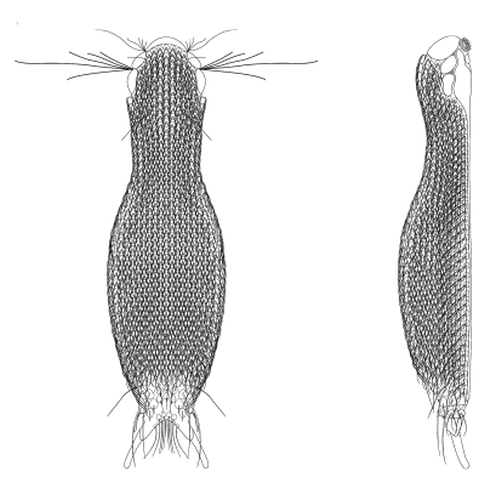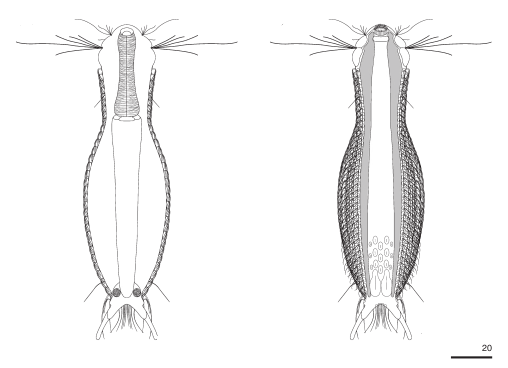 (after (Kånneby, 2013))Length ( bottle ):
(after (Kånneby, 2013))Length ( bottle ):123 µm - 135 µm
Width:28 µm - 38 µm
Width of the head ( five-lobed ):25 µm - 30 µm
Width of the neck:18 µm µm
Length of the furca:18 µm - 20 µm
Adhessive tubes (dick):50% of furca
Pharyx ( cylindrical ):34 µm - 35 µm
Diameter of the mouth ( around ):4-6 µm
Dorsal scales:16-19 rows of 27-30 suboval overlapping scales (3x3 µm) each with a cleft spine (9µm); one pair of parafurcal spines (14-16 µm).
Ventral scales:Ventral intercilliary field naked except for posterior third, which bears small, oval keels (2x2 µm); two keeled terminal plates (6x4 µm); 7-8 terminal spines (10-14 µm).
Oecology:Riverbed
Similar species:well delimitable
Particularities:split spines


